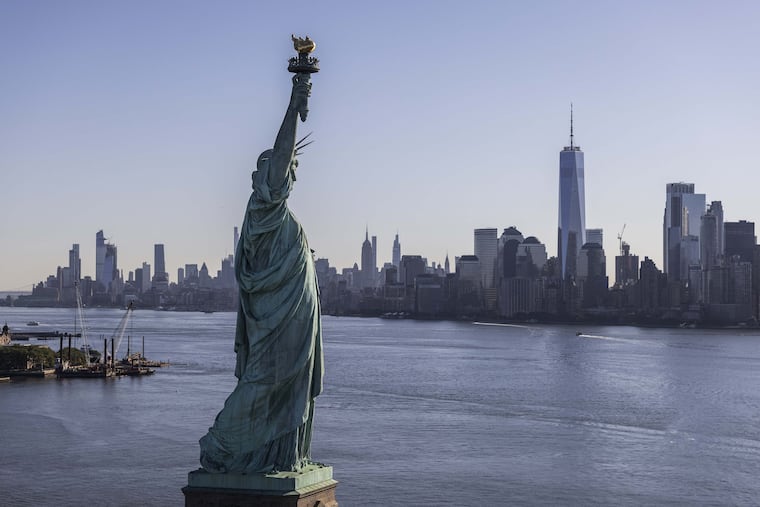NASA says a meteor fireball was responsible for a boom heard over New York and New Jersey. So, um, what exactly is that?
The meteor shares a name with the cinnamon whiskey fans shoot at Eagles tailgates.

It wasn’t an earthquake this time. The sky isn’t falling either. Instead, it was a meteor that shares a name with the cinnamon whiskey fans shoot at Eagles tailgates.
Residents in New Jersey and New York reported hearing a loud boom Tuesday morning, with some even saying that they saw a ball of fire in the sky.
But rest assured, it was nothing apocalyptic. NASA officials reported the phenomenon can be chalked up to a daylight fireball meteor. As the name suggests, a daylight fireball meteor is a meteor that’s bright enough to be seen during the day because it burns brighter than the sun’s light when entering the Earth’s atmosphere, according to the American Meteor Society.
NASA’s Meteor Watch team said that the daylight fireball entered the chat as early as about 10 a.m., with media and eyewitness reports of booms, shaking, and fireball visibility through noon Tuesday.
Trajectories show that the meteor flew over parts of New Jersey, the Upper Bay in Jersey City, and Manhattan. It even did a bit of sightseeing, passing over the Statue of Liberty before disintegrating about 29 miles overtop midtown.
According to NASA, no meteorites — fragments of fireballs that can sometimes be found on the ground — were produced by this fireball. And for residents still rattled by the earthquake that took place in April and was felt in regions of Philadelphia, New Jersey, and New York, experts say this was not a repeat incident.
» READ MORE: An earthquake, aftershocks rock the Philly region
“An examination of the seismic data in the area showed no evidence of an earthquake,” a spokesperson with the U.S. Geological Survey National Earthquake Information Center told local New York station WPIX.
As for additional details, NASA officials say the specs are a little fuzzy.
“Many folks are under the impression that NASA tracks everything in space,” a Facebook post from the agency’s Meteor Watch account said. “We do keep track of asteroids that are capable of posing a danger to us Earth dwellers, but small rocks like the one producing this fireball are only about a foot in diameter, incapable of surviving all the way to the ground.”
NASA added that the agency doesn’t track small rocks that are significant distances from the Earth and only becomes aware of them when they generate meteors that enter the atmosphere.
In short: “NASA watches the natural stuff,” the Department of Defense keeps track of satellites and orbital debris, and the American Meteor Society connects the dots, logging eyewitness accounts of meteors and their course, NASA said.
Based on those eyewitness reports, NASA estimates that the fireball traveled at about 38,000 miles per hour.